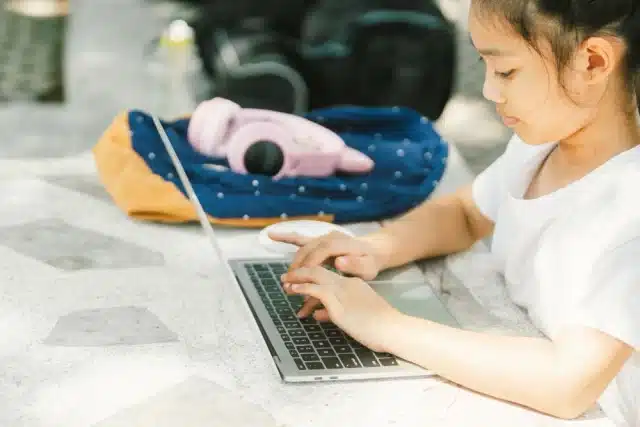Over the last few years, there’s been a global shift towards remote learning. Creating effective and engaging study areas at home has since become a crucial task for parents and educators alike. A well-designed study space can significantly enhance a child’s ability to concentrate, engage with their lessons and enjoy the learning process.
Understanding the Importance of a Dedicated Study Space
Before diving into the design specifics, it’s important to understand why a dedicated study space is essential. A well-defined learning area helps children distinguish between their study time and leisure time. Thus, promoting better concentration and discipline. It also provides a consistent environment where they can develop a routine, which is fundamental for effective learning.
Selecting the Right Location
The first step in creating a study space is finding the right location. Ideally, this should be a quiet area away from the hustle and bustle of household activities. While not every home has the luxury of a separate room for studying, you can transform a quiet corner into a productive study nook. Just make sure to consider if there’s good lighting, minimal noise and a comfortable temperature.
The Foundation of Comfort
Flooring plays a surprisingly significant role in the overall comfort and functionality of a study space. The type of flooring you choose can affect noise levels, warmth and the general atmosphere of the room.
Carpet is a great choice for reducing noise and adding warmth to the study area. It provides a comfortable surface for children who may spend time on the floor reading or working on projects. But it requires regular cleaning and can easily be stained.
Laminate or wood flooring are durable and easy to clean. You can then add an area rug for additional comfort and noise reduction; rugs also allow for a pop of colour and design, making the space more inviting.
Linoleum or vinyl flooring are practical choices, especially for multi-purpose rooms. They’re easy to maintain and capable of withstanding spills and heavy use. Cushioned vinyl can also provide comfort that’s like carpet without the need for extensive cleaning.
Natural and Artificial Lighting
Good lighting is crucial for a conducive study environment. Natural light is the best option, so positioning the study area near a window can be beneficial. However, you should ensure that the sunlight isn’t too harsh or direct as it can cause glare on screens or work surfaces. In the absence of sufficient natural light, you can use a combination of overhead lighting and a good-quality desk lamp. Make sure the lamp provides adequate illumination without being too harsh on the eyes.
Ergonomic Furniture
Comfort is paramount when it comes to creating a study space. Investing in ergonomic furniture can make a significant difference. Think about a chair with proper back support and an adjustable height, which is crucial to ensure that your child keeps a healthy posture. The desk should then be at a height where your child can write or type comfortably without straining their arms or wrists.
Organising Supplies and Resources
A clutter-free environment is essential for concentration. You’ll want to equip the study space with organisational tools such as shelves, bins and drawers to keep books, stationery and other supplies neatly arranged. A bulletin board or a whiteboard can be useful for pinning important notes, schedules and reminders. Plus, encouraging your child to keep an organised desk can instil good habits and reduce distractions!
Personalisation and Engagement
While functionality is important, personalising the study space can make it more inviting and engaging for your child. Let them have a say in the décor – whether it’s choosing the colour of the walls, picking out a fun desk lamp or displaying their artwork. Personal touches can make the space feel more like their own; encouraging them to spend time in there.
Incorporating Technology
In the era of remote learning, technology plays a pivotal role. Ensure that the study area is equipped with the necessary technological tools such as a reliable computer or tablet, high-speed internet and any required peripherals like headphones, a webcam or a printer. It’s also important to manage the use of technology by setting up parental controls and encouraging regular breaks to prevent screen fatigue.
Creating a Distraction-Free Zone
Minimising distractions is vital for keeping focus. This means keeping the study area free from non-educational gadgets, toys and other distractions. If possible, you want to establish a clear boundary between the study space and play areas to help your child switch between learning and leisure modes.
Encouraging Movement and Breaks
Sitting for prolonged periods can be detrimental to a child’s health and concentration. You want to design the study area in a way that encourages regular breaks and physical activity. This could include having a small exercise area nearby or simply ensuring that there is enough space to stretch and move around. Setting a timer for regular breaks can also help children manage their time effectively and return to their studies refreshed.
Incorporating Nature
Studies show that incorporating elements of nature into a workspace can reduce stress and improve concentration. You should consider adding some indoor plants to the study area; not only do they enhance the aesthetic appeal, but they also improve air quality and provide a calming effect.

A professional writer with over a decade of incessant writing skills. Her topics of interest and expertise range from health, nutrition and psychology.


